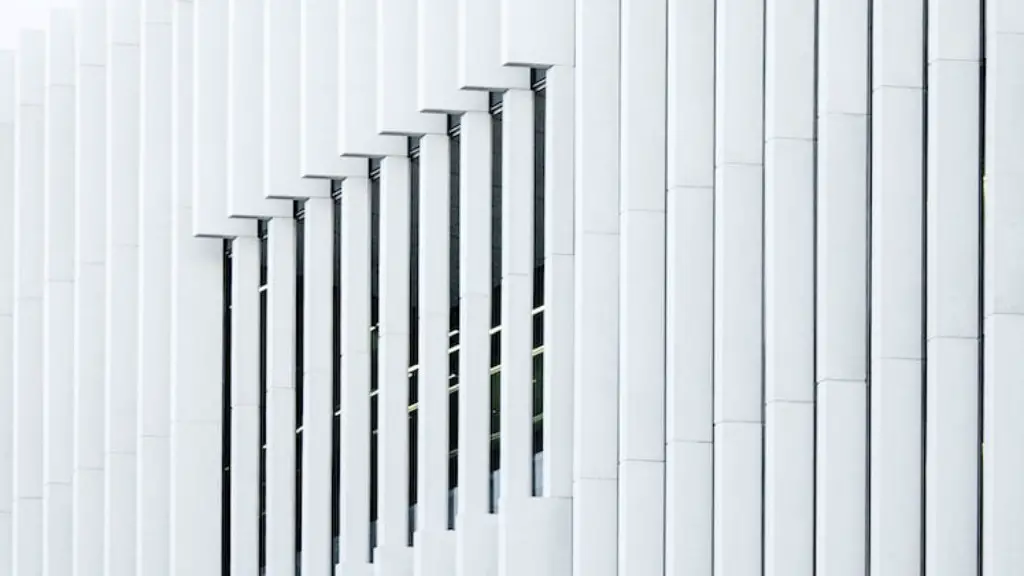The Ten Books of Architecture, written by the Roman architect and engineer Marcus Vitruvius Pollio is considered one of the most influential architectural treatises in history. First published around the 1st century BC, the Ten Books of Architecture is a discourse on architecture that focuses on the importance of mathematics, geometry and strength in building design. While many researchers and scholars have tried to determine who actually wrote the treatise, the answer is still inconclusive.
Vitruvius was a Roman military engineer who lived during the times of Julius Caesar, approximately 100BC to 30BC. In his treatise, he discussed topics such as building composition, proportions, materials and systems of engineering that were to become essential to the development of architecture as an art form.
His book was the first to provide a comprehensive overview of architecture, covering topics such as all building types, classical orders, building materials and techniques and the construction of residential, institutional and military buildings. He also described measurement, geometry, and proportions and the practice of building acoustically right concert halls. It was the first of its kind and the success of his writings in antiquity was such that it was copied and distributed throughout the world.
The Ten Books of Architecture served as a primary source for generations of architects and engineers who copied, edited and improved upon Vitruvius’ work. Vitruvius’ treatise was frequently referred to by Renaissance theorists and early modern architects, who considered his work as the epitome of architectural theory and practice in the western world. It is still a staple in the world of architecture today and has left an indelible mark on the field of design.
Vitruvius’ treatise was a heavily authoritative and influential source on classical and Renaissance architectural theory. The surviving manuscripts of the Ten Books of Architecture offer a unique insight into the world of classical architecture, with clarity and consistency in its writing style, providing readers with a concise description of architecture and its applications. The treatise has been translated and distributed numerous times over the centuries, in different languages and cultures, and continues to be studied by modern architecture students around the world.
Vitruvius’ Ten Books of Architecture is an indispensable source for learning about the foundational principles of classical architecture. Its influence on contemporary architecture has been tremendous and much of this influence can still be felt today. Vitruvius has undoubtedly had an immense impact on all aspects of architectural design and the study of architecture, and it is safe to say that his treatise has shaped the very landscape of modern architecture.
Building Materials
Vitruvius highlighted the impactful use of materials in buildings, offering insight into the various structures, components and materials to be used in buildings. He emphasised the importance of materials such as stone, wood, bronze and iron, while also exploring a variety of building systems and components such as cement, hydraulics and leadwork.
Vitruvius categorized materials based on their strength, durability, and resistance to weather, noting that the natural elements should be taken into account when constructing buildings, so as to maximise their lifespan and aesthetic appeal. He considered the cost and sustainability of materials, as well as their ability to maintain consistent temperatures, absorb sound and sustain heavy loads.
Vitruvius discussed reliable building materials such as marble, limestone and granite, as well as alternative materials like concrete, cement and brick, noting the strength and durability of each. He also discussed insulation and energy efficiency, advocating the use of good building practices that consider the impact of climate on buildings. He emphasised that the materials used should be based on the region and the climate, taking into account the preservation of the environment.
As an advocate for use of natural materials and efficient building practices, Vitruvius foretold the individual contributions made by modern engineering and materials sciences. He wrote extensively on sustainable construction, suggesting the use of stone, wood and timber construction methods that were designed to make use of the building materials available without damaging the environment.
Geometry and Proportions
At its core, Vitruvius’ treatise is focused on the importance of geometry and proportions in architectural design. The notion of proportion was one of the primary considerations in his architectural treatise, wherein he discussed the number of building elements, their sizes and shapes, as well as the overall composition.
For Vitruvius, geometry and mathematical principles underlie aspects of order and balance in architecture. He was a firm believer that there should be proportionality between the physical building components, such as columns and windows, doors and walls; and that a unifying visual aesthetic should be achieved between the component parts.
Vitruvius argued that architectural designs should be grounded in a harmonious relationship between the dimensions and construction materials chosen, and the various spaces in which they should fit. He suggested that the relationship between space, materials, and human body should be kept in a ratio of one to one, and this was called the ‘ Golden Ratio’, which is still a fundamental concept in modern design and architectural theory.
Vitruvius considered the idea of symmetry, noting that perfect balance should not be achieved, but rather the proportions should provide a sense of balance that encourages an aesthetic and unified appearance. This concept underlies the notion of unity, wherein all parts of a building should be visually integrated and combined, making use of unified patterns, shapes and lines.
Building Strength and Functionality
Vitruvius believed that a building should have strength and functionality, and should be able to withstand the most extreme of weather conditions and structural conditions. He noted that in order for a building to have strength, it must not only be aesthetically pleasing, but also strong and durable.
Vitruvius emphasised the importance of the choice of materials, their composition and the construction methods necessary to build a building that provided strength and functionality without detracting from its overall aesthetic. He discussed the effect of particular climates on structures, advocating the use of appropriate tactics and strategies to ensure that buildings could withstand extreme weather, including natural factors such earthquakes, hurricanes and flooding.
Vitruvius placed a great emphasis on the stability of a building, noting that the stability of a building is an important factor for the building to function and to last.
Vitruvius also wrote extensively on the various engineering techniques that can be used to strengthen the structure. He discussed the importance of foundations and the various systems available, such as joists, beams and columns. He also discussed the importance of roof trusses and suggested that they should be employed to ensure the correct weight distribution.
Safety and Comfort
Vitruvius focused on providing comfort to those who inhabit a building, and advocated various techniques to improve the safety of a building. He provided advice on fire safety, noting the importance of physical fire protection and systems, as well as preventative measures such as fire extinguishers, smoke detectors, and fire alarm systems.
Furthermore, he discussed the importance of natural light, ventilation, and temperature-control in buildings, advocating the use of efficient insulation systems in order to improve comfort and safety. He discussed the importance of natural light and air quality, noting that adequate ventilation was necessary for the health and well-being of occupants.
Vitruvius also emphasised the importance of sound-proofing in buildings, suggesting that insulation techniques should be employed to reduce sound transmission. He also noted that the use of thick wooden doors and heavy curtains can reduce sound significantly, while also providing security and protection from hazardous materials.
It was evident that Vitruvius’ approach was extremely thorough, advocating safety and health over aesthetic. He considered the important elements of a comfortable and secure building, providing guidance to architects on how to mitigate safety issues, while also providing an understanding of how to improve the living conditions of occupants.
Innovation in Architecture
Vitruvius’ treatise had a profound influence on the development of architecture as an art form, introducing innovations in design and engineering. He sought to bring together the fields of art and science, creating a discourse on architecture that synthesised classical theories with engineering principles. Vitruvius believed that combining art and science would help architects to create permanent and beautiful structures.
The treatise was also groundbreaking in its emphasis on creating aesthetic value through the use of mathematical proportions and classical orders. Vitruvius explored the ways in which composition and arrangement of proportion could create a powerful and visually engaging structure, advocating for the strategic use of order, symmetry and rhythm in the design.
Vitruvius was a firm believer in the importance of innovation and experimental design, noting that there was always room in architecture for the development of new ideas. He suggested that innovative use of materials and components should be taken into consideration, such as the use of barrel vaults, timber frames, and stone vaults.
Vitruvius’ Ten Books of Architecture encouraged the advancement of architectural theory and practice, introducing bold ideas and revolutionary methods of construction. He has left an indelible mark on the world of architecture and is still considered a pioneer of the field.
Legacy of Vitruvius
Vitruvius’s Ten Books of Architecture has had a lasting impact on the development of architecture, and his ideas continue to shape modern design and engineering. His teachings have become ubiquitous in architectural education, and his treatise remains a primary source of knowledge in the field.
The work of Vitruvius has inspired innovators and engineers in architecture, providing an important foundation of knowledge in the field. His impact on architecture cannot be overstated, and his treatise is still discussed and documented to this day.
The Ten Books of Architecture has been described as one of the most influential works of architecture in history, and its impact can still be felt to this day. Vitruvius is rightly considered one of the leading forces in the development of architecture as an art form, and his legacy is one that will continue to shape and inform the field for many years to come.





